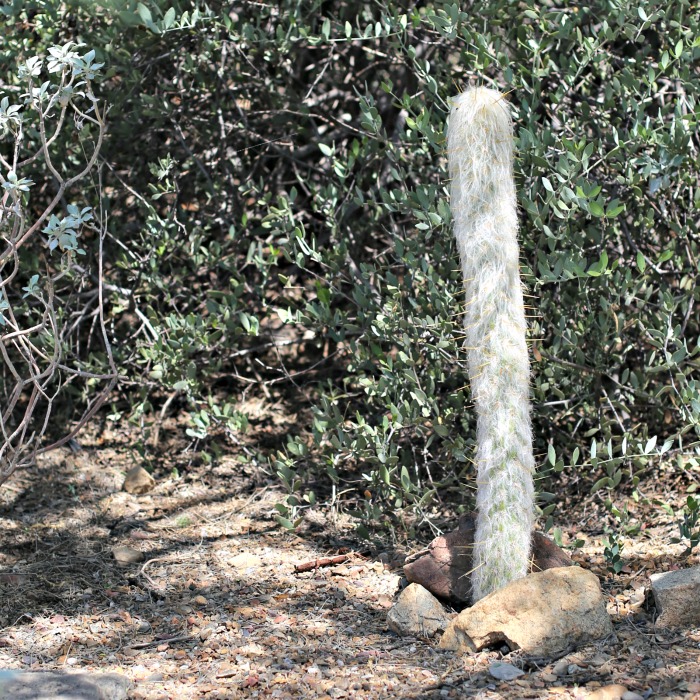The Hairy Old Man Cactus, scientifically known as Cephalocereus senilis, is not just a plant; it is a curiosity of nature. With its strikingly fuzzy appearance that resembles a scruffy old sage, this cactus often prompts the question: how much effort does it take to keep this whimsical botanical companion thriving? While its aesthetic appeal is undeniable, caring for the Old Man Cactus presents its own set of unique challenges. Let’s delve into the essential aspects of cultivating this fascinating cactus.
From optimal growing conditions to the best watering practices, knowing how to properly care for your Hairy Old Man Cactus can make all the difference. Embrace the opportunity to nurture this enchanting plant, and you may find yourself rewarded with its impressive stature and fluffy complexion.
Understanding the Natural Habitat
Before you embark on the journey of nurturing a Hairy Old Man Cactus, it’s wise to consider its native environment. This cactus hails from the arid landscapes of Mexico, where it thrives in rocky, well-draining soils under the intense sun. Understanding its natural habitat is pivotal to mimicking the conditions in which this cactus flourishes.
In the wild, the Hairy Old Man Cactus can grow to impressive heights, sometimes exceeding 10 feet. However, growing it outdoors in non-native regions comes with its own hurdles, including temperature tolerance and sunlight exposure. Generally, the cactus prefers full sun — ideally six hours a day — so ensuring it receives ample light in a garden or indoor setting is critical for its growth and longevity.
Creating the Right Environment
Whether you decide to grow the Hairy Old Man Cactus indoors or outdoors, establishing an appropriate environment will significantly impact its health.
Soil Requirements:
This distinct cactus requires a well-draining soil mix. A combination of potting soil, sand, and pumice works wonders, allowing excess moisture to escape while providing the necessary nutrients. Cacti require a specific balance; too much organic matter could lead to rot while insufficient drainage might have the same effect.
Temperature Considerations:
Ideal temperatures for the Hairy Old Man Cactus range from 70°F to 100°F (21°C to 38°C) during the day and slightly cooler at night. Be cautious of exposure to temperatures below 50°F (10°C), as these can cause stress or even fatality to your cactus.
Lighting Needs:
As earlier mentioned, this cactus thrives in full sun. If you’re gardening indoors, consider a south-facing window that receives indirect light, or invest in grow lights to supplement natural light. Regularly rotating the plant can prevent uneven growth, a common issue with cacti left in the same position for extended periods.
Watering Wisely
Perhaps the most common challenge when caring for cacti is the watering schedule. Cacti, including the Hairy Old Man, are notoriously drought-resistant, requiring far less water than many other houseplants.
Watering Schedule:
During the growing season, from spring to early fall, a thorough watering every two weeks may be adequate. However, during the dormant winter period, it is crucial to reduce watering substantially, perhaps even to once a month. This practice prevents root rot, a prevalent risk when a cactus is overwatered.
Responsive Watering Techniques:
Always assess the soil moisture before watering. A simple touch test can be your best ally; if the top inch of soil feels dry, it is time to water. Conversely, if it feels damp, it’s best to wait until it dries out fully. Maintaining this careful balance will ensure your Hairy Old Man Cactus remains healthy and vibrant.
Pest Control and Disease Management
Despite its formidable exterior and hardy nature, the Hairy Old Man Cactus is not immune to threats from pests and diseases. Being proactive about these challenges can save you from losing this unique plant.
Common Pests:
Watch for common offenders such as spider mites and mealybugs. Regular inspection of the plant, focusing on the fuzzy areas, can help catch infestations early. If detected, try removing pests manually or using insecticidal soap for treatment.
Signs of Stress:
Discoloration or wilting might indicate issues, whether they arise from over- or under-watering, or pest infestations. Promptly addressing these symptoms can mitigate more severe problems that could threaten your cactus.
Embracing the Unique Aesthetic
The Hairy Old Man Cactus offers more than just a cheerful appearance; it symbolizes endurance and adaptation. Its spiny, furry coat serves dual purposes: it protects the plant from herbivores and helps trap moisture. This cactus not only adds character to any space but also serves as a conversation starter, bringing a touch of the desert to your home or garden.
Conclusion: The Reward of Caring
Ultimately, while the Hairy Old Man Cactus may pose a few challenges in care, the rewards of nurturing this unique specimen can far outweigh the effort. With proper watering, light, and attention to its natural needs, you can enjoy the companionship of this delightful cactus. It is not just a plant; it is a testament to the fascinating powers of adaptation and survival in nature. Will you be the one to embrace the challenge and let this majestic cactus thrive in your care?





Leave a Comment